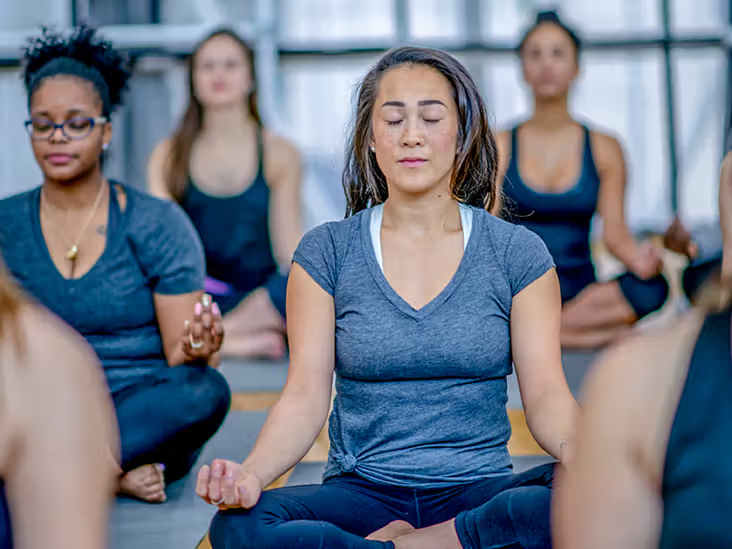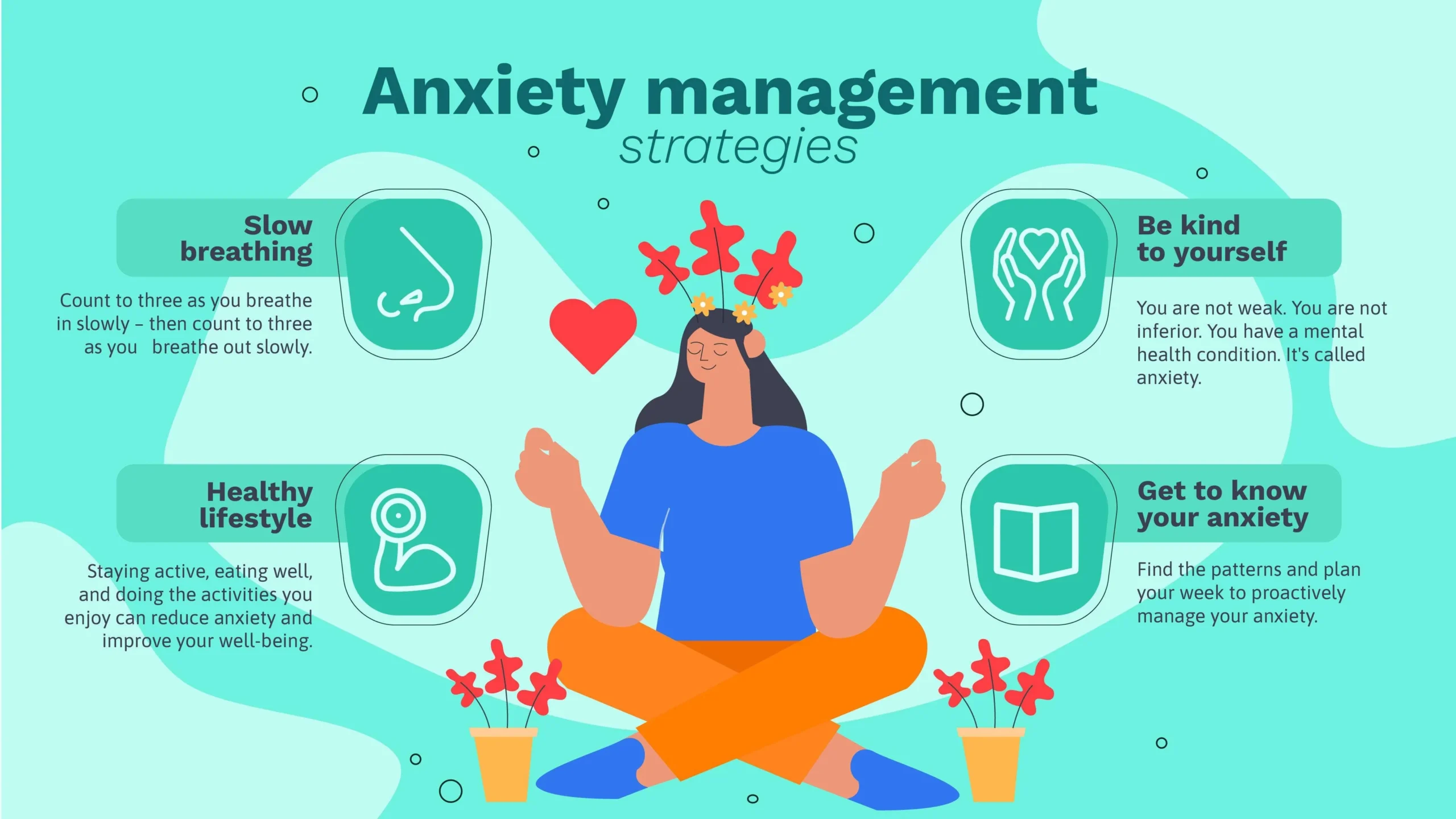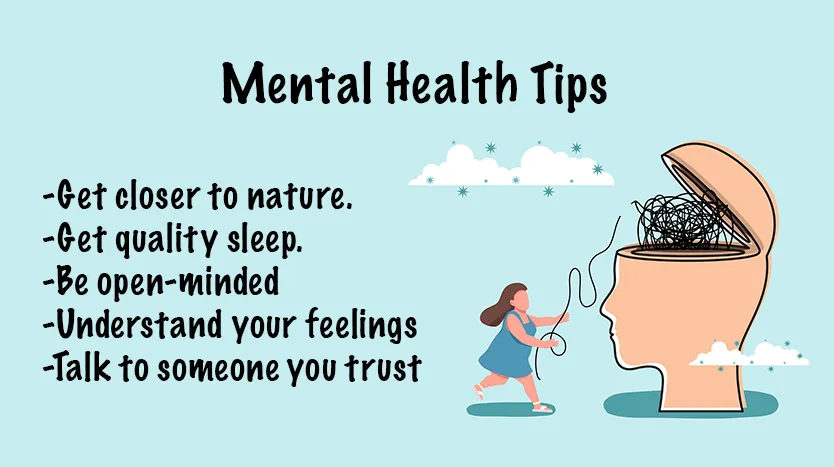Anxiety can feel overwhelming, affecting both the mind and body. However, one of the most effective tools to manage anxiety is something we do every moment of our lives: breathing. Controlled breathing exercises are a natural, accessible, and scientifically supported way to reduce stress and promote relaxation. Below, we explore various breathing techniques to help calm the mind and body during anxious moments.
Why Breathing Exercises Work
When you’re anxious, your body’s fight-or-flight response kicks in, causing rapid, shallow breathing, increased heart rate, and heightened alertness. This can lead to dizziness, chest tightness, and a sense of panic.
Breathing exercises help:
- Lower heart rate and blood pressure.
- Increase oxygen flow to the brain.
- Activate the parasympathetic nervous system, which promotes relaxation.
- Distract from negative thought patterns.
1. Diaphragmatic Breathing (Belly Breathing)
Diaphragmatic breathing focuses on deep breaths that engage the diaphragm rather than shallow breaths from the chest.
How to Practice:
- Sit or lie down in a comfortable position.
- Place one hand on your chest and the other on your abdomen.
- Inhale deeply through your nose for a count of four, letting your belly rise as you fill your lungs with air.
- Exhale slowly through your mouth for a count of six, feeling your belly fall.
- Repeat for 5–10 minutes.
Benefits:
- Reduces physical symptoms of anxiety, such as a racing heart.
- Promotes relaxation by stimulating the vagus nerve.
2. Box Breathing
Box breathing, also known as square breathing, is a simple technique often used by Navy SEALs to maintain focus and calm under pressure.
How to Practice:
- Inhale deeply through your nose for a count of four.
- Hold your breath for a count of four.
- Exhale slowly through your mouth for a count of four.
- Hold your breath again for a count of four.
- Repeat for 3–5 minutes.
Benefits:
- Enhances concentration and mental clarity.
- Stabilizes oxygen levels in the body.
3. 4-7-8 Breathing
This technique, developed by Dr. Andrew Weil, is a powerful way to reduce anxiety and promote sleep.
How to Practice:
- Sit in a comfortable position and close your eyes.
- Inhale through your nose for a count of four.
- Hold your breath for a count of seven.
- Exhale slowly through your mouth for a count of eight, making a whooshing sound.
- Repeat the cycle 4–5 times.
Benefits:
- Slows the heart rate.
- Encourages relaxation before bedtime.
4. Alternate Nostril Breathing (Nadi Shodhana)
This yoga-based breathing technique balances the mind and body by alternating the breath through each nostril.
How to Practice:
- Sit in a comfortable position with your back straight.
- Close your right nostril with your thumb and inhale through your left nostril.
- Close your left nostril with your ring finger and exhale through your right nostril.
- Inhale through your right nostril, then close it and exhale through your left nostril.
- Continue this pattern for 5 minutes.
Benefits:
- Balances energy levels.
- Calms the nervous system.
5. Pursed-Lip Breathing
Pursed-lip breathing is particularly helpful during moments of panic or hyperventilation.
How to Practice:
- Inhale slowly through your nose for two counts.
- Purse your lips as if you’re about to whistle.
- Exhale slowly through your pursed lips for four counts.
- Repeat for several minutes.
Benefits:
- Improves oxygen exchange.
- Slows breathing rate.
6. Resonance Breathing
Also known as coherent breathing, this technique involves syncing your breath with a slow rhythm to create a state of calm.
How to Practice:
- Inhale deeply through your nose for a count of six.
- Exhale slowly through your mouth for a count of six.
- Continue this steady rhythm for 10 minutes.
Benefits:
- Synchronizes heart and breathing rates.
- Induces a meditative state.
7. The Humming Bee Breath (Bhramari)
This yoga technique uses a humming sound during exhalation to calm the mind and reduce anxiety.
How to Practice:
- Sit comfortably with your eyes closed.
- Inhale deeply through your nose.
- Close your ears with your thumbs and gently press your fingertips over your eyes.
- Exhale slowly while making a humming sound like a bee.
- Repeat 5–7 times.
Benefits:
- Reduces stress and mental agitation.
- Improves focus and concentration.
8. Progressive Muscle Relaxation with Breathing
This combines deep breathing with muscle relaxation to reduce tension.
How to Practice:
- Sit or lie down comfortably.
- Inhale deeply through your nose while tensing a specific muscle group (e.g., hands, shoulders).
- Exhale through your mouth while releasing the tension.
- Move through each muscle group, from head to toes.
Benefits:
- Relieves physical symptoms of anxiety.
- Promotes a sense of calm and relaxation.
Tips for Effective Practice
- Create a Routine: Practice breathing exercises daily, even when you’re not feeling anxious, to make them more effective during stressful moments.
- Set the Mood: Choose a quiet, comfortable space where you won’t be interrupted.
- Combine with Mindfulness: Pair breathing with mindfulness or meditation for added benefits.
- Use Technology: Apps like Calm, Headspace, or Breathe+ can guide you through exercises.
When to Seek Help
While breathing exercises can be incredibly beneficial, they may not be enough for severe or chronic anxiety. If anxiety significantly impacts your daily life, consider consulting a mental health professional for additional support.
Conclusion
Breathing exercises are a simple yet powerful tool to manage anxiety. They can be practiced anywhere, require no special equipment, and offer immediate relief. By incorporating these techniques into your daily routine, you can take significant steps toward reducing anxiety and enhancing overall well-being.




